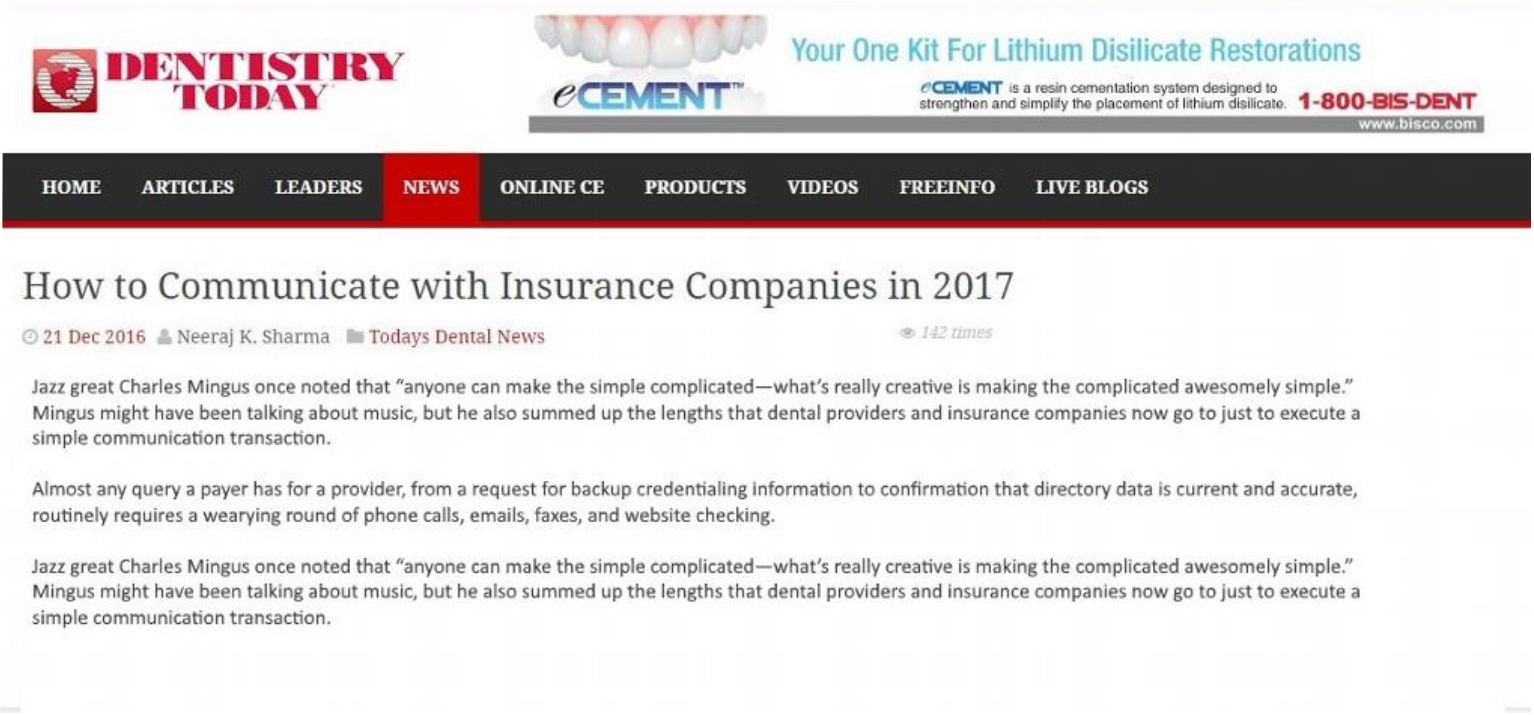
Jazz great Charles Mingus once noted that “anyone can make the simple complicated—what’s really creative is making the complicated awesomely simple.” Mingus might have been talking about music, but he also summed up the lengths that dental providers and insurance companies now go to just to execute a simple communication transaction.
Almost any query a payer has for a provider, from a request for backup credentialing information to confirmation that directory data is current and accurate, routinely requires a wearying round of phone calls, emails, faxes, and website checking.
It’s a huge burden on the dental provider’s time and resources, but no longer an insurmountable one. Many dental organizations are making the ingenious move to let automated tools do all this “talking” instead, processing unlimited volumes of payer requests at breath-taking speed.
Still, as efficient as these tools are, it’s essential to keep in mind that they supplement rather than supplant human interaction. With that, let’s delve into the top communication tactics to take with insurance companies in the year ahead, aided by provider data management technology.
Catalog Your Insurance Company Contacts
This can’t be said enough: dental organizations that fulfill requests for information in a consistent, structured manner are the ones that insurance companies want to deal with. With so many dental providers to reach out to, there’s never going to be one dedicated person at an insurance company just waiting to receive and process information from your practice. So, don’t throw your information out there thinking that people will have the time and inclination to extract from it what they need.
Instead, take the lead in making information gathering and processing as simple as possible for insurance companies. Begin by cataloging every health plan you participate in. Then include the insurance company rep’s contact information for each plan; very often, you may have more than one rep for different functions such as credentialing and provider directory updates. Be sure the rep and his or her role is clearly distinguished to avoid wasting time reaching out to the wrong person. Lastly, include each provider that is associated with the plan.
Centralize and Standardize Communication
Obviously, the above tactics are only effective if everyone follows them, so make sure that your staff have the insight to do so. Designate a single, central location from which to manage communication with insurance companies. This will be the same place you keep the above information about health plans, plus all your provider enrollment, credentialing, and directory data.
There are provider data management systems that store all this information. Those that are internet-based or cloud-based will offer a true centralized “hub” for multi-location practices. Even more, they can automate much of the work involved in fulfilling insurance requests. This includes “one and done” data inputting that automatically populates related data fields across different forms; duplicate record scrubbing; and the ability to send insurance companies documentation right from the provider data management system itself.
Note that once such capabilities are in place, dental practices no longer feel they have to save up batches of enrollment, credentialing, and provider directory tasks to process. This isn’t a recommended best practice, either. Insurance companies don’t want to process a bulky batch of requests any more than you want to tackle a separate new one every day.
Close the Loop
When you’ve completed a transaction, make sure both you and the insurance company consider it closed. This will be helpful on a couple of different levels. First, it will keep everyone in your dental practice or services organization on the same page about where your provider data activities stand with each insurance company. Second, it will serve as an evidence trail for proving that your organization did indeed complete or otherwise comply with an insurance company’s request. So if you’ve sent updated information on three different providers, or a copy of a provider’s license, or anything else the insurer requested, ask for confirmation that it was received. Then make note of this confirmation.
Of course, as we know, communication with payers never really ends. Just as soon as a directory is updated or provider is credentialed, it will be time to renew the information for both. With that, here’s one last tip: make sure your provider data management system has automatic reminders built in for upcoming expirations. Such a system, paired with the tactics above, can make the business of practicing dentistry much simpler. Make that awesomely simpler